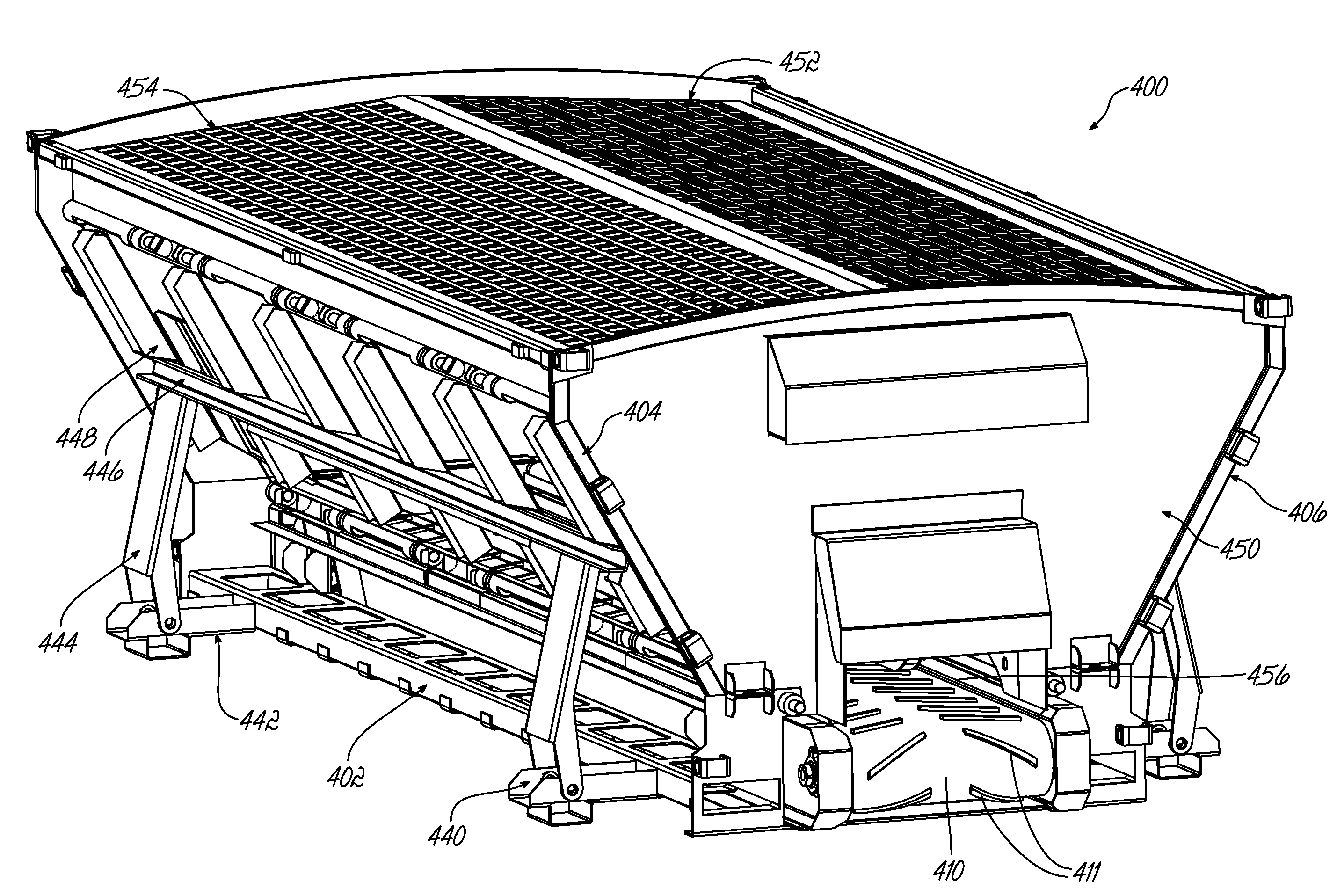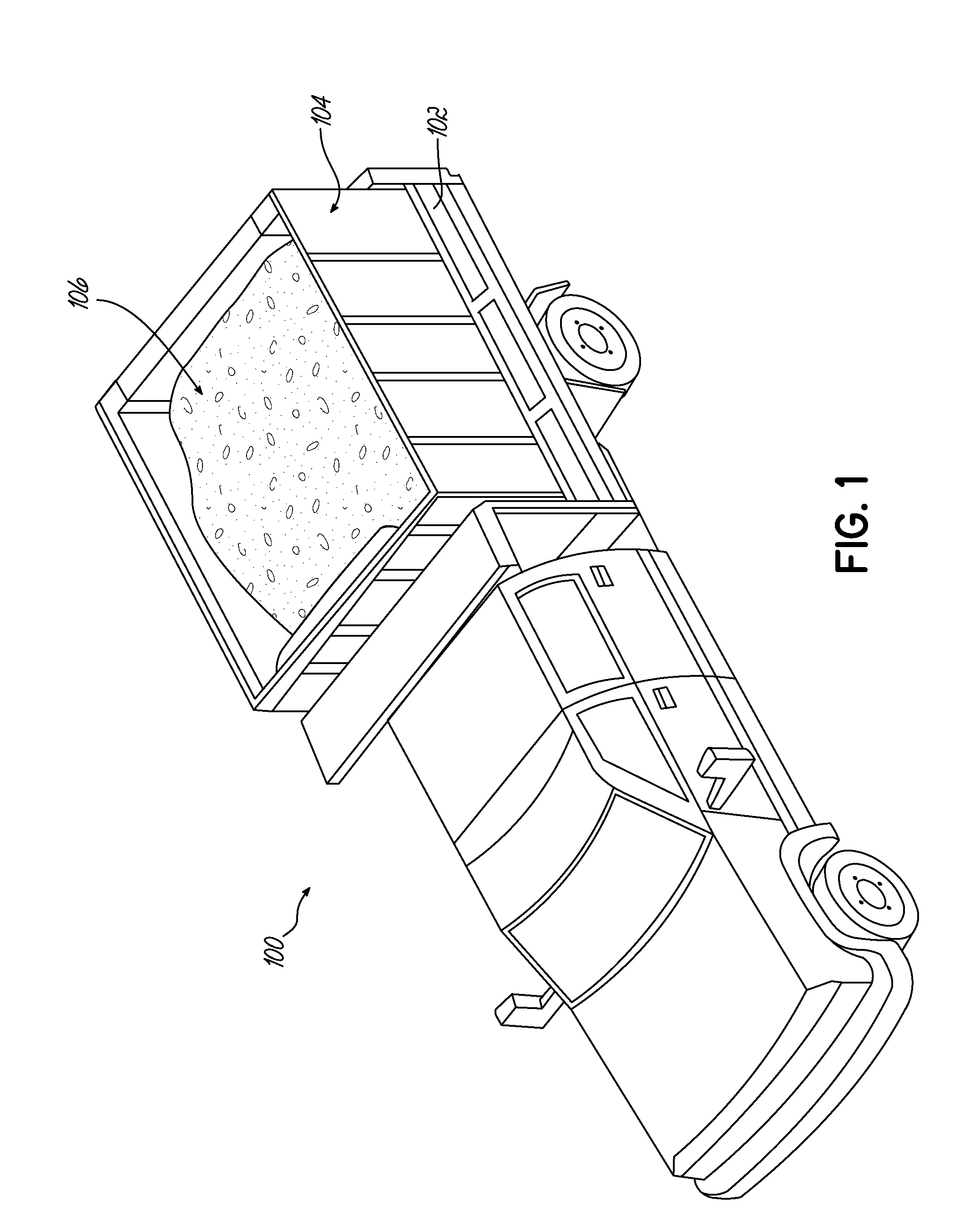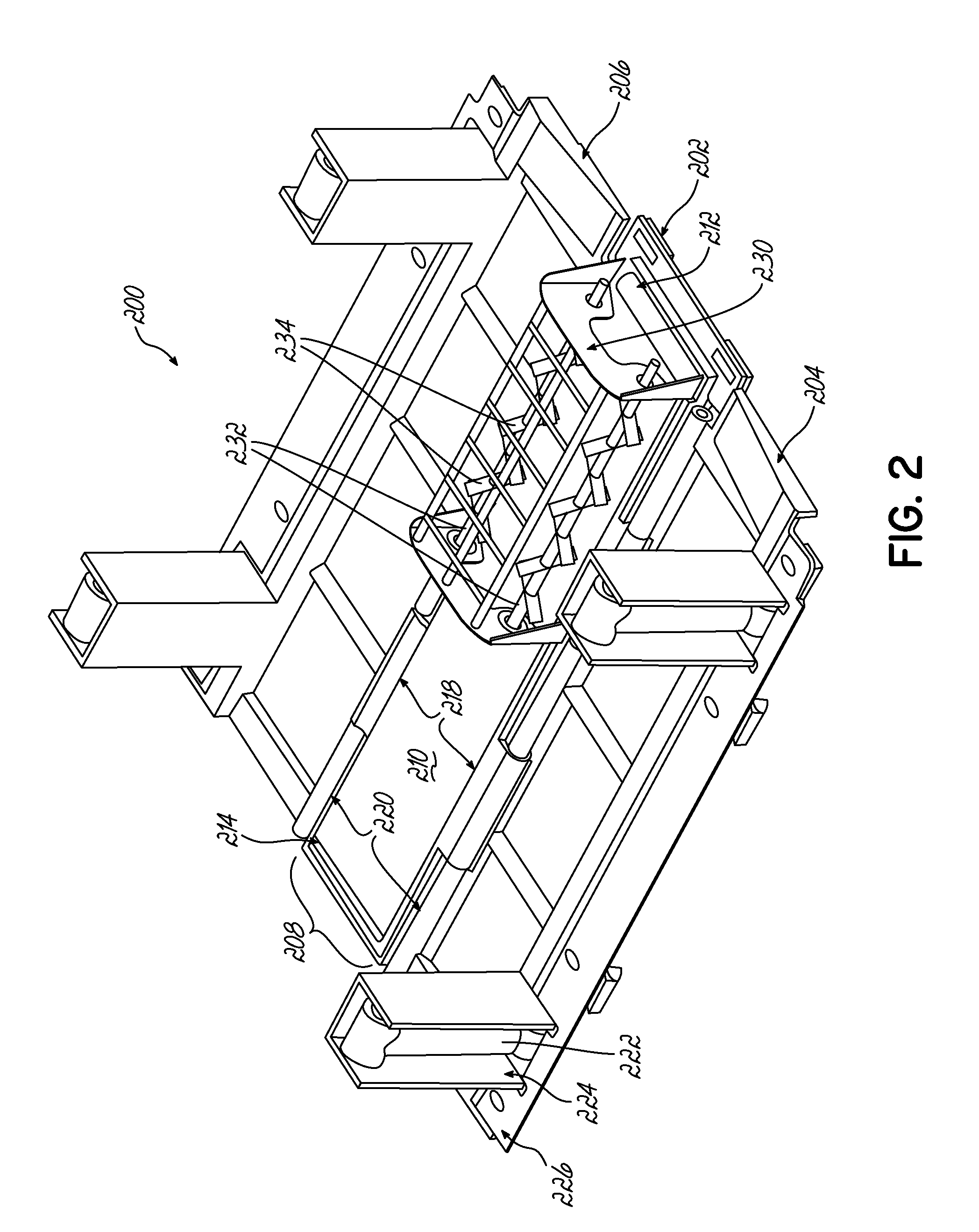Therefore heavy construction equipment, such as front end
loader type devices, is generally not practical for
bulk material handling due to the risk of damaging the existings
lawn and landscape gardening areas.
As a result, much of the work must be performed by individual workers, and the nature of the work presents challenges.
Mulch,
compost, and
topsoil can all carry a high water percentage (in excess of 20%), and therefore these materials can become quite heavy, especially when wet.
Moving these vehicles can again be challenging if the materials are heavy.
Decomposing mulch and compost can generate significant heat, thereby making their handling even more taxing.
Although the hose is an effective conduit for transporting material to the selected landscape
bed, materials are typically blown outside of the desired area, such as onto sidewalks, parking areas,
plant materials, and building portions near the planting beds.
As a result, the use of a blower device often requires a secondary labor step of cleaning up the over-sprayed material.
These small capacity machines can be quite expensive, but they are also cost-effective relative to larger blower models, which often require being mounted on a dedicated truck.
The issue of a larger truck can also present problems designating a properly trained and licensed driver.
Also, larger truck mounted units may be difficult to move on the job site.
Despite the transportation and maneuverability advantages of smaller units, the limited volume of the hopper capacity decreases the device's labor-savings benefit because operators must continually reload the hopper.
However, this additional piece of equipment adds ownership and maintenance costs, and requires additional resources for transporting it to the jobsite.
Moreover, the specialized nature of mulch blowing machines comes with significant maintenance requirements, and the inevitable repairs.
These repairs can be quite expensive.
Although mulch wagon systems are effective at transporting a large volume of material to a job site, they provide no assistance in transferring material at the job site itself.
Further, mulch wagons are expensive.
The cost of either of several commercially available trailer-mounted mulch wagons far exceeds the cost of the vehicle that would typically tow the wagon.
Mower deck caster wheels have been designed to support the load of the
mower deck without causing ruts in various surface soils and conditions, but the
caster wheels were not necessarily designed to do so with an additional 500-1000 pounds of bulk material.
However, mulch in particular, is frequently spread in the spring when the ground is often wet and soft, resulting in the formation of ruts created by the dramatically increased
ground pressure due to the additional load on the
mower deck caster wheels.
Given that one of the primary objectives for installing mulch is
beautification, creating anything more than an occasional
rut is not considered to be an acceptable practice.
Organic fertilizing material (compost) is bulky, especially when compared to granulated or liquefied fertilizers, and three to five cubic yards of organic material may be required to fertilize or top dress the
lawn and garden areas of a typical
residence.
While the use of top dressing with organic fertilizing material as a substitute for chemical fertilizers has environmental benefits that are desirable to some consumers, the labor-intensive process for loading it into a top dresser's hopper requires considerable time and effort that translates into costs.
This can make organic fertilizing methods more expensive than conventional chemical fertilizers.
However, the shape of the v-shaped hopper results in elevating the truck's center of gravity which to some extent limits the weight of material that the truck can safely transport.
As the V box extends up not only is the volume of material at an increased elevation, but continuing higher begins to present a risk of the V box hitting overhead obstructions.
More significantly, the funneling geometry of the v-shaped box reduces the total volume of material that the truck can transport, as compared with a regular truck bed.
This limitation on capacity results in more frequent returns to the restocking location.
Frequent restocking reduces productivity at a time when maintenance crews are trying to treat parking areas and roads.
These devices have limited popularity for distributing bulk
snow and ice
control material because they often require the truck to be driven with the bed raised in order to deliver a
continuous flow of bulk material to the conveyor.
Although not as expensive as the systems for handling bulk mulch, these salt delivery systems also only have a seasonal use.
Throughout the off-season, which in many areas is the vast majority of the year, they sit idle and are often subject to the weather if stored outdoors or consume indoor storage space and this lack of use results in a certain amount of wear and annual maintenance.
For example, water can get into bearing assemblies and
rust can form on the exposed surfaces of idle bearings.
In addition, mechanical linkages can become rusty or stiff from nonuse.
Although an accepted practice, there is a cost and certain level of inconvenience associated with seasonal refurbishment of these devices.
Commercially available devices are available, but present the landscape company operators with the additional expense from the purchase of a leaf container, seasonal installation and removal from the truck, and
periodic maintenance thereof.
Removing the leaf container and replacing with a device for distributing salt can incur a labor expense.
 Login to View More
Login to View More  Login to View More
Login to View More 


